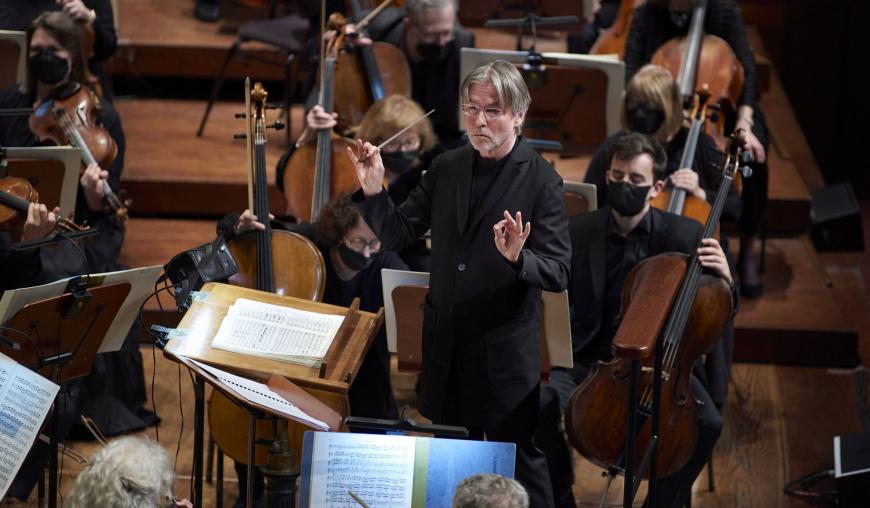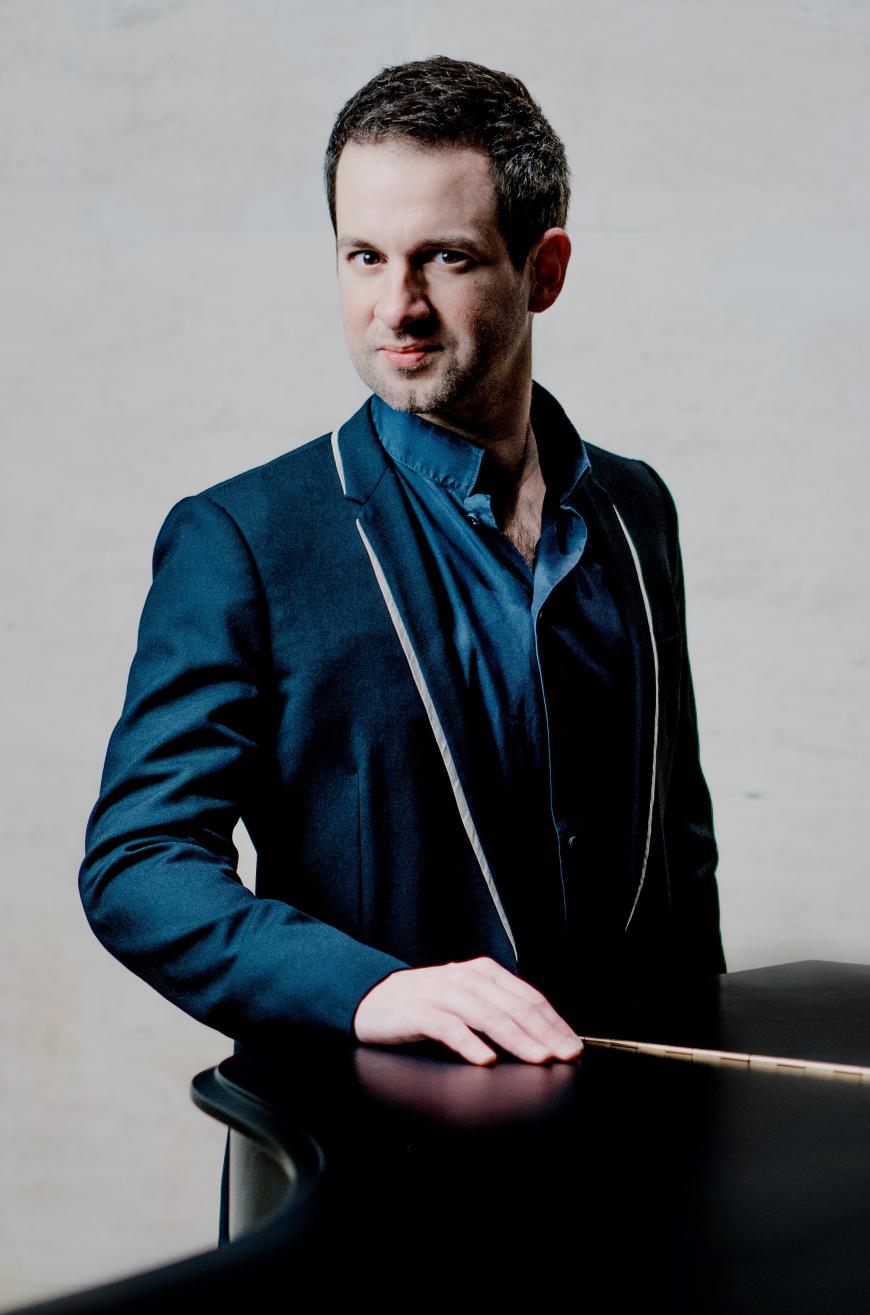
San Francisco Symphony concertgoers got a glimpse of a less-expected side of their music director on Thursday, Oct. 20: Esa-Pekka Salonen, pops conductor.
For the first program of an informal two-week Halloween-themed festival, Salonen chose three spooky but popular chestnuts from the 19th century: Modest Mussorgsky’s Night on Bald Mountain, Franz Liszt’s Totentanz, and Hector Berlioz’s Symphonie fantastique.
Night on Bald Mountain was presented in its original all-Mussorgsky version, instead of the cleaned-up edition that Nikolai Rimsky-Korsakov offered after Mussorgsky’s death and that dominated in performance until quite recently. Even the beginning of this version is rougher and more chaotic in harmony and dynamics than the edited version. The closing section, depicting the rising dawn, is the most different: far more turbulent and edgy in Mussorgsky’s original.
Totentanz, presented here in its final 1865 revision, is a set of variations on the Latin church chant “Dies irae” (Day of wrath), often borrowed in classical music as an ominous “death” tune. (Berlioz used it also.) Liszt welds this into a brief piano concerto. While the orchestral music snarls weirdly (violas and bassoons make a striking combination), piano-cadenza interludes change character abruptly and run off in more pacific if sprightly directions. Bertrand Chamayou was the pianist who played the florid Lisztian rhetoric with panache and vigor.

The Symphony performed these works with snap and agility under Salonen’s energetic direction. He favors an orchestral sound leaner, brasher, and more rough-edged than his predecessor Michael Tilson Thomas did. That fit his abrupt and jolting approach to Béla Bartók’s Concerto for Orchestra last week and applied equally well to these two pieces.
It fit even better for the closing movement of Symphonie fantastique, “Dream of a Witches’ Sabbath.” Salonen molded this movement into a diabolical tone poem, surpassing in eerie, startling, and downright scary quality anything that Mussorgsky or Liszt had to offer. The playing was crisp and crackling, with emphasis on rasping sounds from the strings and other creepy noises. These effects are what Berlioz directs for this movement, but he rarely gets as much of them as he did here.
The rest of Thursday’s Symphonie fantastique, however, was entirely different. The “March to the Scaffold” was tossed off as hastily and inconsequentially as its inherently dramatic character would permit. The first three movements were transformed into a vast pastoral landscape of expansive placidity. Salonen’s interpretation eschewed the bright and shiny in favor of a darker and ruminative quality, bringing out gentle rhythmic underpinnings and museful countermelodies. The only variances on this were some hurtling increases of tempo in the opening “Reveries — Passions” — which otherwise felt expectant and introductory — and a stringent, brittle conclusion to “A Ball.” Overall, and not just in the obvious “Scene in the Fields,” the music in these movements was like a vacation in the same peaceful landscape depicted in the first half of Beethoven’s “Pastoral” Symphony.
It was an unexpected approach for a Halloween concert. Perhaps it represented the bowl of candy and a pumpkin pie. But the supernatural side of the holiday was more than generously conveyed by the “Witches’ Sabbath” and the other two works.




